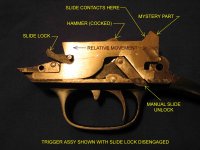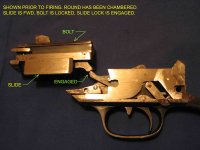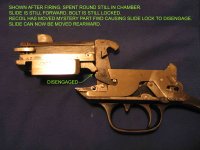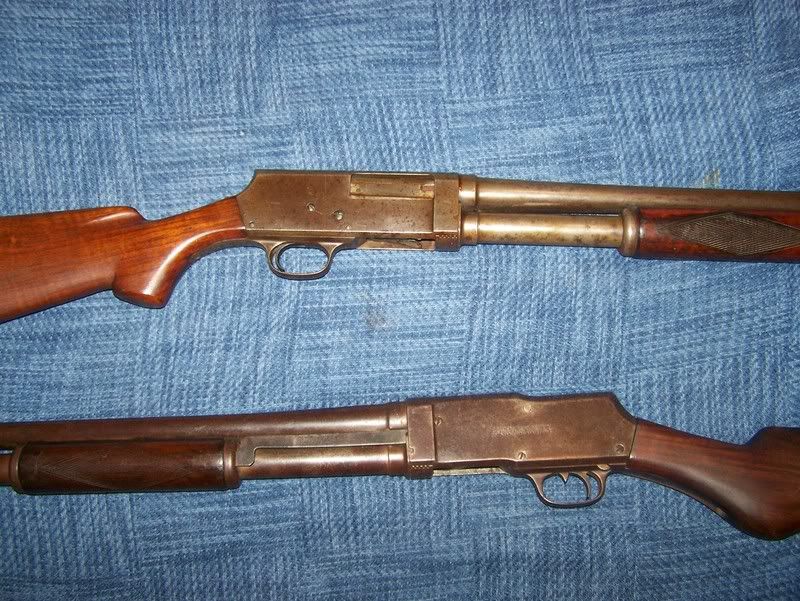I have a Stevens model 520 in 12 gauge that belonged to my grandfather. It has the 2 step squared off receiver with "J. Stevens Arms Company" stamped on the left side and the safety located inside the trigger guard. S/N is 629XX
I've been searching for info on the slide unlocking mechanism. I obtained copies of Brownings original patent application that explains how the recoil operated slide unlocking mechanism works. However, the parts on my gun don't match the parts on the patent drawing. I understand that quite a few years have passed between when the patent was issued and when the gun was manufactured, but I've yet to find anything in any of the parts breakdowns I've seen that matches what's inside of this gun.
If anyone could provide a source for a manual, schematics or assembly / disassembly instructions I would greatly appreciate it.
I've been searching for info on the slide unlocking mechanism. I obtained copies of Brownings original patent application that explains how the recoil operated slide unlocking mechanism works. However, the parts on my gun don't match the parts on the patent drawing. I understand that quite a few years have passed between when the patent was issued and when the gun was manufactured, but I've yet to find anything in any of the parts breakdowns I've seen that matches what's inside of this gun.
If anyone could provide a source for a manual, schematics or assembly / disassembly instructions I would greatly appreciate it.




